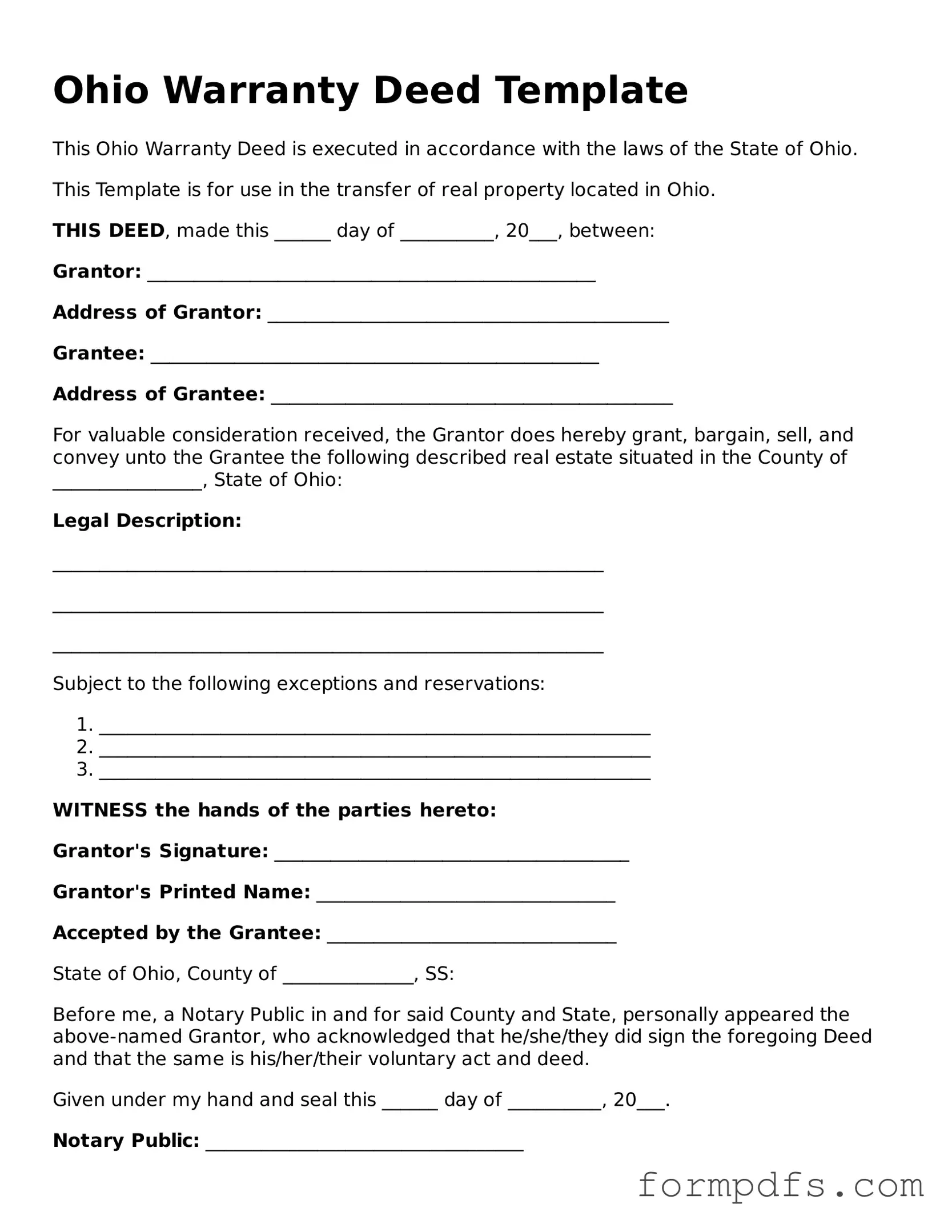What is an Ohio Deed form?
An Ohio Deed form is a legal document used to transfer ownership of real property from one party to another. This form outlines the details of the transaction, including the names of the parties involved, a description of the property, and the terms of the transfer. It is essential for ensuring that the change in ownership is officially recorded and recognized by the state.
What types of deeds are available in Ohio?
Ohio recognizes several types of deeds, including warranty deeds, quitclaim deeds, and special warranty deeds. A warranty deed provides the highest level of protection to the buyer, guaranteeing that the seller has clear title to the property. A quitclaim deed transfers whatever interest the seller has in the property without any guarantees. A special warranty deed offers some protection, but only for the time the seller owned the property.
How do I complete an Ohio Deed form?
To complete an Ohio Deed form, you will need to provide specific information, such as the names of the grantor (seller) and grantee (buyer), the legal description of the property, and any relevant details about the transaction. It is important to ensure all information is accurate and clearly written. After filling out the form, both parties must sign it in the presence of a notary public.
Do I need to have the deed notarized?
Yes, in Ohio, the deed must be signed in front of a notary public to be legally valid. The notary will verify the identities of the parties involved and witness the signing of the document. This step is crucial for ensuring that the deed can be recorded with the county recorder's office.
Where do I file the Ohio Deed form?
The completed and notarized Ohio Deed form must be filed with the county recorder's office in the county where the property is located. Filing the deed officially records the transfer of ownership and makes it a matter of public record. There may be a filing fee, so check with the local recorder's office for specific details.
Are there any taxes associated with transferring property in Ohio?
Yes, when transferring property in Ohio, there may be transfer taxes due. The amount can vary based on the value of the property and the county where it is located. It is advisable to check with the local county auditor or treasurer for the exact rates and any exemptions that may apply.
Can I create my own Ohio Deed form?
While it is possible to create your own Ohio Deed form, it is recommended to use a standard form or consult with a legal professional to ensure compliance with state laws. Using a standard form can help avoid errors and ensure that all necessary information is included for a valid transfer of ownership.
